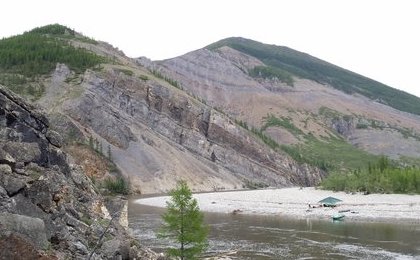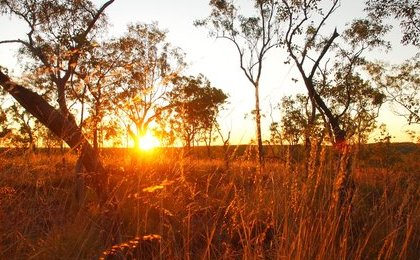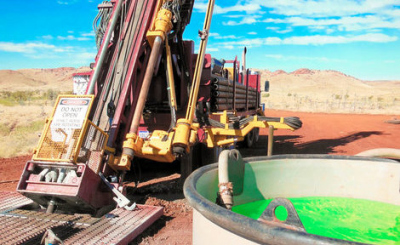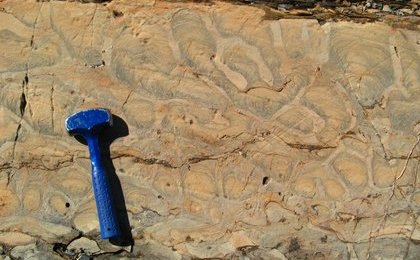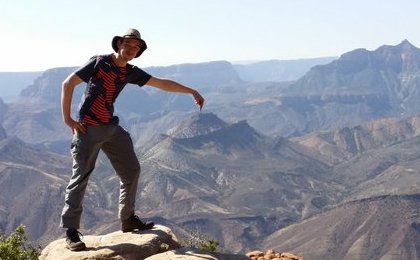- Paleo-Biogeochemistry
- Expeditions
Field work & Expeditions
Also follow this link for more impressions from the field.
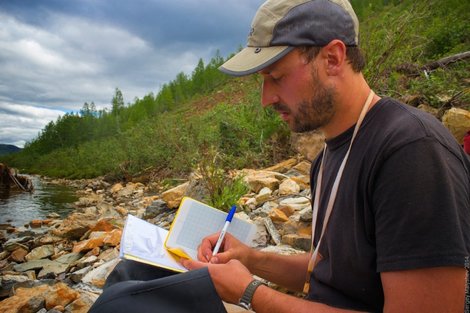
Along the bank of the Belaya River, eastern Siberia.
Meso- to Neoproterozoic sedimentary sequence in eastern Siberia, visited in 2014 with Vladimir Pavlov (RAS), Sergey Malyshev (St. Petersburg University), Eric Bellefroid (Yale) and Andrej Shatsillo (Schmidt Institute for Geophysics).
Within the framework of a collaborativ effort to obtain a greater understanding of Mesoproterozoic environments, Jochen Brocks (ANU), postdoc Benni Bruisten, Matt Schmitz (Uni Jena) and myself studied sediments of the MacArthur basin in outcrop and in core: summer 2015.
Funded by the Agouron Institute, we pioneered the use of ultra-clean (hydrocarbon-free) drilling to study the oldest biomarker traces of life on Earth.
Also see: (ENG) or (DE)
Paleoproterozoic rocks on the Belcher Islands host some of the oldest cyanobacterial microfossils. Together with Dominic Papineau, Marilyn Fogel and Paul Strother we visited and remote field site.
Some of the best preserved early Neoproterozoic sediments are found within the Grand Canyon. This study site is the PhD focus of student Lennart van Maldegem and was visited after an arduous multi-day hike.



